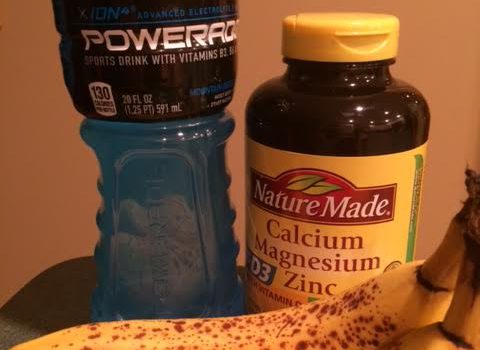By Dr. Dale Buchberger
When it comes to injuries such as muscle strains, ligament tears, nerve irritation, tendon tears, tendonitis, etc. most people would think about taking Advil, getting a cortisone shot, receiving physical therapy, chiropractic treatment or even surgery. All of those respective treatments are effective when provided to the appropriate conditions. The thing that most of us fail to recognize is the importance of diet in healing or preventing various injuries or conditions that occur to our muscles, tendons and ligaments. In particular there are three main dietary components that can have a substantial influence on the recovery and prevention of injury. These three components are simple yet ellusive; calcium/magnesium and zinc; hydration; an anti-inflammatory diet.
Calcium and magnesium are essential minerals for all of our bodily systems. Calcium is required for all muscle contractions and nerve functions. Without calcium it is difficult for our systems to function at their best whether you are competing in a marathon or healing from a surgery. One area that calcium is helpful with is cramping of the leg muscles. Cramping can occur in the highly conditioned athlete or the deconditioned patient. Cramping is a sign of a deficiency. The myth of cramping is that it occurs from lost sodium. This is true if the conditions are right. A patient who is in poor physical condition might cramp during simple rehabilitation exercises. In this scenario the likely culprit is a low reserve of calcium to assist in muscle contraction. How much calcium do we need? Here are daily doses for specific age categories; 9 to 18 years: 1300 mg 19 to 50 years: 1000 mg 50+ years: 1200 mg. Remember that these doses are for the general public. Athlete’s in training or a patient recovering from an injury that gets the “minimal” dose through their diet will still need to take a calcium supplement to make up for the calcium that is used for aggressive exercise or rehabilitation.
Our bodies have been estimated to be 60-75% water depending on the source that you read. Human systems need adequate hydration to function properly and heal appropriately. It astonishes me each day knowing how many people walk around “relatively dehydrated”. If your muscles are dehydrated for example they are acting like that dried out sponge under your sink. You squeeze it and it crumbles. Adequately hydrated muscles act like that nice new sponge absorbing nutrients and doing a great job for you. As a general rule if you are not drinking at least half your body weight in ounces of water then you are “relatively dehydrated”. You don’t have to drink water specifically but following simple hydration rules can help improve your bodies training and recovery systems. Drink fluids that are non-carbonated, caffeine free and alcohol free. Limit fruit juices, as they are high in simple sugars. Sports drinks such as Gatorade should be diluted 50-50 with water. Diluting sports drinks improves absorption, reduces calories and helps your budget! This formula, from the International Sports Medicine Institute, will help calculate your daily water intake: 1/2 ounce per pound of body weight if you’re not active (eighty ounces a day if you weigh 160 pounds), and 2/3 ounce per pound if you’re athletic (106 ounces a day, at 160 pounds).
The third item has been called “anti-inflammatory” nutrition. This eating approach consists of foods that produce anti-inflammatory compounds rather than pro-inflammatory compounds. The main idea of an anti-inflammatory diet is to avoid “bad” fats and to consume “good” fats while reducing the intake of processed foods (commercial white bread, etc.) and eating whole foods (fresh fruits and vegetables, etc.).
The “bad” fats are polyunsaturated and partially hydrogenated fats and oils. These fats are found in most processed foods, lead to the production of pro-inflammatory compounds and should be eliminated from the diet. Trans-fats, also fit into the “bad” fat category, are found in margarine and shortening and should also be avoided. Olive oil is a great alternative to margarine or shortening and contains omega-9 fatty acids, which work with omega-3 essential fatty acids benefiting the body.
Good fats include omega-3 fatty acids, which are found mainly in cold-water fish. These include mackerel, salmon, sardines, anchovies and herring. Omega-3 fatty acids are also found in walnuts, Brazil nuts, almonds, pumpkin seeds and sunflower seeds. Additional foods possessing anti-inflammatory properties include fruits, vegetables and grains. Fruits and vegetables included most berries, kiwi, peaches, mango, cantaloupe, apples, carrots, squash, sweet potato, spinach, broccoli, cabbage and brussel sprouts. Grains include lentils, chickpeas, brown rice, wheat germ and non-instant oatmeal.
Competing athletes or patients have at their disposal progressive nutritional approaches that promote prevention and recovery. As always speak to your healthcare provider to make sure you can safely make these changes given your specific medical history. Eat well my friends!

